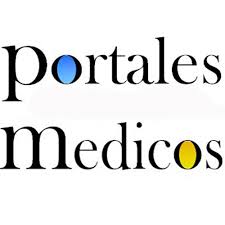Correlación entre la amplitud de distribución eritrocitaria y los parámetros hematológicos e inflamatorios, en sujetos venezolanos con procesos infecciosos
Resumen
DOI: https://doi.org/10.53766/AcBio/2023.13.26.17
La amplitud de distribución eritrocitaria es un parámetro hematológico que mide la variabilidad del tamaño de los glóbulos rojos y clásicamente se ha utilizado para determinar el origen de las anemias, sin embargo, actualmente se ha asociado a enfermedades no hematológicas. El objetivo de esta investigación fue determinar si existe correlación entre la amplitud de distribución eritrocitaria y los parámetros hematológicos e inflamatorios, en sujetos venezolanos con procesos infecciosos. Fue un estudio piloto, transversal retrospectivo, donde se registraron los valores de velocidad de sedimentación globular, proteína C reactiva y parámetros hematológicos, de 48 sujetos (40,3 ± 16,2 años de edad), que acudieron al servicio de emergencia del Hospital Universitario de Caracas, los cuales fueron divididos según su estado infeccioso en dos grupos: G1 (sin proceso infeccioso aparente asociado) (n=28) y G2 (con proceso infeccioso) (n=20). Se encontró que sólo hubo diferencia estadísticamente significativa en el contaje de glóbulos blancos y la relación neutrófilo/linfocito (p< 0,05) entre G1 y G2; la amplitud de distribución eritrocitaria mostró correlación positiva con la velocidad de sedimentación globular (p< 0,01), la proteína C reactiva (p< 0,05) y la relación neutrófilo/linfocito (p< 0,05) en el G2, mientras que no mostró correlación con ningún parámetro en el G1. Se concluye que probablemente los procesos infecciosos condicionan a que exista correlación positiva entre la amplitud de distribución eritrocitaria y la velocidad de sedimentación globular, la proteína C reactiva y la relación neutrófilo/linfocito. Se sugiere dar continuidad a este estudio con un tamaño muestral mayor.
Recibido: 14/07/2023
Aceptado: 22/08/2023
Palabras clave
Texto completo:
PDFReferencias
Evans TC, Jehle D. The red blood cell distribution width. J Emerg Med. 1991;9 Suppl 1: 71-4.doi: 10.1016/0736-4679(91)90592-4. PMID: 1955687.
Salvagno GL, Sanchis-Gomar F, Picanza A, Lippi G. Red blood cell distribution width: A simple parameter with multiple clinical applications. Crit Rev Clin Lab Sci. 2015;52(2): 86-105.doi: 10.3109/10408363.2014.992064. Epub 2014 Dec 23. PMID: 25535770.
Hoffmann JJ, Nabbe KC, van den Broek NM. Effect of age and gender on reference intervals of red blood cell distribution width (RDW) and mean red cell volume (MCV). Clin Chem Lab Med 2015; 53(12): 2015-2019.doi:10.1515/cclm-2015-0155. PMID: 26536583.
Lee JY, Choi H, Park JW, Son BR, Park JH, Jang LC, Lee JG. Age-related changes in mean corpuscular volumes in patients without anaemia: An analysis of
large-volume data from a single institute. J Cell Mol Med. 2022;26(12): 3548-3556.doi:10.1111/jcmm.17397. Epub 2022 May 22. PMID: 35599236; PMCID: PMC9189337.
Hernández J. Índices hematimétricos y enfermedades no hematológicas. Rev. Fac. Med 2021; 44(1): 95-121
Talarico M, Manicardi M, Vitolo M, Malavasi VL, Valenti AC, Sgreccia D, Rossi R, Boriani G..Red Cell Distribution Width and Patient Outcome in
Cardiovascular Disease: A ''Real- World'' Analysis. J Cardiovasc Dev Dis. 2021;8(10):120. doi: 10.3390/jcdd8100120. PMID: 34677189; PMCID: PMC8539630.
Lippi G, Filippozzi L, Montagnana M, Salvagno GL, Franchini M, Guidi GC, Targher G. Clinical usefulness of measuring red blood cell distribution width on admission in patients with acute coronary syndromes. Clin Chem Lab Med. 2009; 47(3):353-357. doi:10.1515/cclm.2009.066
Cemin R, Donazzan L, Lippi G, Clari F, Daves M. Blood cells characteristics as determinants of acute myocardial infarction. Clin Chem Lab Med. 2011;
(7):1231-1236. doi:10.1515/CCLM.2011.183
Xiao LJ, Liu JL, Pan NN, Wan J, Lan X, Cui SJ, Yu HJ. The Predictive Value of Red Cell Distribution Width and Red Cell Distribution Width to Erythrocyte Count Ratio for Adverse Cardiovascular Events During the Hospitalization of Patients of STsegment Elevation Myocardial Infarction. Clin Lab. 2020; 66(7). doi:10.7754/Clin.Lab.2019.191123. PMID: 32658410.
Qin Y, Wang P, Huang Z, Huang G, Tang J, Guo Y, Huang P, Lai Z, Lin F. The value of red cell distribution width in patients with ovarian cancer. Medicine (Baltimore). 2017; 96(17): e6752.doi: 10.1097/MD.0000000000006752. PMID: 28445301; PMCID: PMC5413266.
Qin YY, Wu YY, Xian XY, Qin JQ, Lai ZF, Liao L, Lin FQ. Single and combined use of red cell distribution width, mean platelet volume, and cancer
antigen 125 for differential diagnosis of ovarian cancer and benign ovarian tumors. J Ovarian Res. 2018; 11(1): 10.doi:10.1186/s13048-018-0382-3.
PMID: 29357908; PMCID: PMC5778734.
Albayrak S, Zengin K, Tanik S, Bakirtas H, Imamoglu A, Gurdal M. Red cell distribution width as a predictor of prostate cancer progression. Asian Pac J Cancer Prev. 2014; 15(18): 7781- 7784.doi: 10.7314/apjcp.2014.15.18.7781. PMID: 25292063.
Huang TB, Zhu LY, Zhou GC,Ding XF. Pre-treatment red blood cell distribution width as a predictor of clinically significant prostate cancer. Int Urol Nephrol. 2021; 53(9): 1765-1771.doi: 10.1007/s11255-021-02900-z. Epub 2021 May 28. PMID: 34047898.
Shi C, Xie M, Li L, Li K, Hu BL. The association and diagnostic value of red blood cell distribution width in colorectal cancer. Medicine (Baltimore). 2019 May; 98(19): e15560. doi: 10.1097/MD.0000000000015560. PMID: 31083220; PMCID: PMC6531168.
Song B, Shi P, Xiao J, Song Y, Zeng M, Cao Y, Zhu X. Utility of red cell distribution width as a diagnostic and prognostic marker in non-small cell lung cancer. Sci Rep. 2020 Sep 24;10(1):15717. doi: 10.1038/s41598-020-72585-4. PMID: 32973271; PMCID: PMC7515922.
Zhang H, Liang K, Ke L, Tang S. Clinical application of red cell distribution width, mean platelet volume, and cancer antigen 125 detection in endometrial cancer. J Clin Lab Anal. 2020;34(8): e23309. doi: 10.1002/jcla.23309. Epub 2020 Mar 20. PMID: 32196750; PMCID: PMC7439417.
Tangthongkum M, Tiyanuchit S, Kirtsreesakul V, Supanimitjaroenporn P, Sinkitjaroenchai W. Platelet to lymphocyte ratio and red cell distribution width as prognostic factors for survival and recurrence in patients with oral cancer. Eur Arch Otorhinolaryngol. 2017;274(11): 3985-3992.doi: 10.1007/s00405-017-4734-1. Epub 2017 Sep 2. PMID: 28866825.
Wang Y, Zhou Y, Zhou K, Li J, Che G. Prognostic value of pretreatment red blood cell distribution width in lung cancer: a meta-analysis. Biomarkers.
;25(3): 241-247.doi: 10.1080/1354750X.2020.1731763 . Epub 2020 Feb 27. PMID: 32064949.
Kiriu T, Yamamoto M, Nagano T, Koyama K, Katsurada M, Tamura D, Nakata K, Tachihara M, Kobayashi K, Nishimura Y.Prognostic Value of Red Blood Cell Distribution Width in Nonsmall Cell Lung Cancer Treated With Anti-programmed Cell Death-1 Antibody. In Vivo. 2019;33(1): 213-220.doi: 10.21873/invivo.11462. PMID: 30587626; PMCID: PMC6364053.
Hirahara N, Tajima Y, Fujii Y, Hyakudomi R, Yamamoto T, Ishitobi K, Taniura T, Kawabata Y. Prognostic significance of red cell distribution width in
esophageal squamous cell carcinoma. J Surg Res. 2018; 230:53-60. doi: 10.1016/j.jss.2018.04.051. Epub 2018 May 25. PMID: 30100040.
Jain K, Sharma D, Patidar M, Nandedkar S, Pathak A, Purohit M. Red Cell Distribution Width as a Predictor of Mortality in Patients With Clinical Sepsis: Experience From a Single Rural Center in Central India. Clin Pathol. 2022; 15: 2632010X221075592.doi: 10.1177/2632010X221075592. PMID: 35141523; PMCID: PMC8819754.
Jo YH, Kim K, Lee JH, Kang C, Kim T, Park HM, Kang KW, Kim J, Rhee JE. Red cell distribution width is a prognostic factor in severe sepsis and septic shock. Am J Emerg Med. 2013;31(3): 545-548.doi:10.1016/j.ajem.2012.10.017. Epub 2013 Feb 4. PMID: 23380094.
Fan YW, Liu D, Chen JM, Li WJ, Gao CJ. Fluctuation in red cell distribution width predicts disseminated intravascular coagulation morbidity and mortality in sepsis: a retrospective single-center study. Minerva Anestesiol. 2021;87(1): 52-64.doi: 10.23736/S0375-9393.20.14420-1. PMID: 33538418.
Wang H, Huang J, Liao W, Xu J, He Z, Liu Y, He Z, Chen C. Prognostic Value of the Red Cell Distribution Width in Patients with Sepsis-Induced Acute
Respiratory Distress Syndrome: A Retrospective Cohort Study. Dis Markers. 2021; 2021: 5543822.doi: 10.1155/2021/5543822. PMID: 34122669; PMCID: PMC8189810.
Ramires MLV, Leite MFB, Lo DZY, Silveira LBD, Ferraz LJR, Pardini A, Sakashita AM, Kondo AT, Olivato GB, Durão Junior MS, Rodrigues AM, Chiloff DM,
Almeida DC, Goes MA. Relation between red blood cell distribution width and acute kidney injury in patients with sepsis. Einstein (Sao Paulo). 2022;20: eAO6828. doi: 10.31744/einstein_journal/2022A O6828. PMID: 35544897; PMCID: PMC9071258.
Huda AQ, Karim MR, Mahmud MA, Islam MS, Haque MF, Islam MR, Hossain MA. Use of Acute Physiology and Chronic Health Evaluation (APACHE)-II and Red
Cell Distribution Width (RDW) for Assessment of Mortality of Patients with Sepsis in ICU. Mymensingh Med J. 2017;26(3):585-591. PMID:28919614.
Sadaka F, O'Brien J, Prakash S. Red cell distribution width and outcome in patients with septic shock. J Intensive Care Med. 2013;28(5): 307-313.doi:
1177/0885066612452838.Epub 2012 Jul 17. PMID: 22809690.
Li Y, She Y, Fu L, Zhou R, Xiang W, Luo L. Association Between Red Cell Distribution Width and Hospital Mortality in Patients with Sepsis. J Int Med Res. 2021 ;49(4): 3000605211004221.doi:10.1177/03000605211004221. PMID: 33823636; PMCID: PMC8033474.
Rhodes A, Evans LE, Alhazzani W, Levy MM, Antonelli M, Ferrer R, Kumar A, Sevransky JE, Sprung CL, Nunnally ME, Rochwerg B, Rubenfeld GD, Angus DC, Annane D, Beale RJ, Bellinghan GJ, Bernard GR, Chiche JD, Coopersmith C, De Backer DP, French CJ, Fujishima S, Gerlach H, Hidalgo JL, Hollenberg SM, Jones AE, Karnad DR, Kleinpell RM, Koh Y, Lisboa TC, Machado FR, Marini JJ, Marshall JC, Mazuski JE, McIntyre LA, McLean AS, Mehta S, Moreno RP, Myburgh J, Navalesi P, Nishida O, Osborn TM, Perner A, Plunkett CM, Ranieri M, Schorr CA, Seckel MA, Seymour CW, Shieh L, Shukri KA, Simpson SQ, Singer M, Thompson BT, Townsend SR, Van der Poll T, Vincent JL, Wiersinga WJ, Zimmerman JL, Dellinger RP. Surviving Sepsis Campaign: International Guidelines for Management of Sepsis and Septic Shock: 2016. Crit Care Med. 2017;45(3):486-552. doi: 10.1007/s00134-017-4683-6. Epub 2017 Jan 18. PMID: 28101605.
Koozi H, Lengquist M, Frigyesi A. C-reactive protein as a prognostic factor in intensive care admissions for sepsis: A Swedish multicenter study. J Crit Care.2020;56: 73-79.doi: 10.1016/j.jcrc.2019.12.009. Epub 2019 Dec 11. PMID: 31855709.
Póvoa P, Coelho L, Almeida E, Fernandes A, Mealha R, Moreira P, Sabino H. C-reactive protein as a marker of infection in critically ill patients. Clin Microbiol Infect. 2005;11(2): 101-108.doi: 10.1111/j.1469-0691.2004.01044. x. PMID: 15679483.
Pradhan S, Ghimire A, Bhattarai B, Khanal B, Pokharel K, Lamsal M, Koirala S. The role of Creactive protein as a diagnostic predictor of sepsis in a
multidisciplinary Intensive Care Unit of a tertiary care center in Nepal. Indian J Crit Care Med. 2016;20(7): 417-420.doi: 10.4103/0972-5229.186226.
PMID: 27555697; PMCID: PMC4968065.
Barati M, Alinejad F, Bahar MA, Tabrisi MS, Shamshiri AR, Bodouhi NO, Karimi H.Comparison of WBC, ESR, CRP and PCT serum levels in septic and non-septic burn cases. Burns. 2008;34(6): 770-774.doi: 10.1016/j.burns.2008.01.014. Epub 2008 May 29. PMID: 18513877.
Piper KE, Fernandez-Sampedro M, Steckelberg KE, Mandrekar JN, Karau MJ, Steckelberg JM, Berbari EF, Osmon DR, Hanssen AD, Lewallen DG, Cofield RH,
Sperling JW, Sanchez-Sotelo J, Huddleston PM, Dekutoski MB, Yaszemski M, Currier B, Patel R. C-reactive protein, erythrocyte sedimentation rate and orthopedic implant infection. PLoS One. 2010;5(2): e9358. doi: 10.1371/journal.pone.0009358. PMID: 20179760; PMCID: PMC2825262.
Wang Y, Li Y, Qiao L, Sun S. Comparison of a Comprehensive Set of Fibrinolytic Markers With C-Reactive Protein and Erythrocyte Sedimentation Rate
for the Diagnosis of Periprosthetic Joint Infection. J Arthroplasty. 2020;35(9): 2613-2618.doi: 10.1016/j.arth.2020.04.096. Epub 2020 May 7. PMID: 32461024.
Qu J, Yuan HY, Huang Y, Qu Q, Ou-Yang ZB, Li GH, Zhu HH, Lu Q.Evaluation of neutrophillymphocyte ratio in predicting bloodstream infection. Biomark
Med. 2019;13(15):1255-1261. doi: 10.2217/bmm-2018-0253. Epub 2019 Oct 3. PMID: 31580146.
Sayed AA, Allam AA, Sayed AI, Alraey MA, Joseph MV. The use of neutrophil-to-lymphocyte ratio (NLR) as a marker for COVID-19 infection in Saudi Arabia: A casecontrol retrospective multicenter study. Saudi Med J. 2021;42(4): 370-376.doi: 10.15537/smj.2021.42.4.20200818. PMID: 33795491; PMCID:
PMC8128643.
Magalhães RS, Magalhães J, Sousa-Pinto B, Cúrdia Gonçalves T, Rosa B, Cotter J. Neutrophilto-lymphocyte ratio: an accurate method for diagnosing infection in cirrhosis. Postgrad Med. 2021;133(6): 613-618.doi: 10.1080/00325481.2021.1916258. Epub 2021 Apr 20. PMID:33843439.
Liu S, Li Y, She F, Zhao X, Yao Y. Predictive value of immune cell counts and neutrophil-tolymphocyte ratio for 28-day mortality in patients with sepsis caused by intra-abdominal infection. Burns Trauma. 2021;9:tkaa040.doi:10.1093/burnst/tkaa040. PMID:33768121; PMCID:PMC7982795.
Inose H, Kobayashi Y, Yuasa M, Hirai T, Yoshii T, Okawa A. Postoperative lymphocyte percentage and neutrophillymphocyte ratio are useful
markers for the early prediction of surgical site infection in spinal decompression surgery. J Orthop Surg (Hong Kong). 2020 Jan-Apr;28(2):2309499020918402. doi: 10.1177/2309499020918402. PMID: 32431207.
Ye Y, Chen W, Gu M, Liu Q, Xian G, Pan B, Zheng L, Chen X, Zhang Z, Sheng P. Limited value of serum neutrophil-tolymphocyte ratio in the diagnosis
of chronic periprosthetic joint infection. J Orthop Traumatol. 2021;22(1): 37.doi: 10.1186/s10195-021-00599-3. PMID: 34536150; PMCID: PMC8449752.
Lippi G, Targher G, Montagnana M, Salvagno GL, Zoppini G, Guidi GC. Relation between red blood cell distribution width and inflammatory biomarkers in a large cohort of unselected outpatients. Arch Pathol Lab Med. 2009;133(4):628-32. doi: 10.5858/133.4.628. Erratum in: Arch Pathol Lab Med. 2009 Aug;133(8):1186.
Ge YL, Liu CH, Rana MA, Zhu XY, Wang N, Xu J, Su CS, Li HL, Li ZZ, Hassan RA, Li HL, Zhang HF, Zhang X, Yu HL, Zhang JB, Fu AS, Wang HY. Elevated Red
Blood Cell Distribution Width Combined White Blood Cell in Peripheral Blood Routine Have a Better Sensitivity than CURB-65 Scores in Predicting ICU
Admission and Mortality in Adult Community-Acquired Pneumonia Patients. Clin Lab. 2019;65(3).doi: 10.7754/Clin.Lab.2018.180828. PMID: 30868855.
Zhu J, Zeng C, Zhang L, Shu S, Liu Y, Chen G, Liu H, Liu Y, Dong Z. Red Blood Cell Distribution Width and Neutrophil-to-Lymphocyte Ratio in Predicting Adverse Outcomes of Acute Kidney Injury in Hospitalized Patients. Kidney Dis (Basel). 2020;6(5):371-381. doi: 10.1159/000507859. Epub 2020 Jun 9. Erratum in: Kidney Dis (Basel). 2020 Sep;6(5):384. PMID: 33490117; PMCID: PMC7745664.
Dispette For qualitative estimation of the Erythrocyte Sedimentation Rate (ESR or Sed-Rate).Acceso 8 de diciembre de 2022 Disponible en: https://images-na.ssl-imagesamazon.com/images/I/81hcrelbalL.pdf
The World Medical Association (WMA). Declaración de Helsinki de la AMM–Principios éticos para las investigaciones médicas en seres humanos. Ferney-Voltaire, France: The World Medical Association; 2017. Acceso 8 de diciembre de 2022. Disponible en https://www.wma.net/es/policiespost/declaracion-de-helsinki-dela-amm-principios-eticos-para-lasinvestigaciones-medicas-en-sereshumanos/
Puerta S, Gallego M, Palacios R, Ruiz J, Nuño E, Márquez M, Santos J. Higher red blood cell distribution width is associated with a worse virologic and clinical situation in HIV-infected patients. J Int AIDS Soc. 2010;13(Suppl4): P69.doi: 10.1186/1758-2652-13-S4-P69. PMCID: PMC3113074.
Fernandez R, Cano S, Catalan I, Rubio O, Subira C, Masclans J, Rognoni G, Ventura L, Macharete C, Winfield L, Alcoverro JM. High red blood cell distribution width as a marker of hospital mortality after ICU discharge: a cohort study. J Intensive Care. 2018; 6: 74.doi: 10.1186/s40560-018-0343-3. PMID: 30473793;PMCID: PMC6240256.
Semba RD, Patel KV, Ferrucci L, Sun K, Roy CN, Guralnik JM, Fried LP. Serum antioxidants and inflammation predict red cell distribution width in older
women: the Women's Health and Aging Study I. Clin Nutr. 2010;29(5):600-604.
Abdel-Moneim A, Abdel-Reheim ES, Semmler M, Addaleel W. The Impact of Glycemic Status and Metformin Administration on Red Blood Cell Indices and Oxidative Stress in Type 2 Diabetic Patients. Malays J Med Sci. 2019;26(4):47-60. doi: 10.21315/mjms2019.26.4.6. Epub 2019 Aug 29. PMID: 31496893;
PMCID: PMC6719883.
Ghazizadeh H, Mirinezhad MR, Seyedi SMR, Sadabadi F, Ahmadnezhad M, Jaberi N, Pasdar A, et al.Prognostic Factors Associating with Pro-oxidantantioxidant Balance; Neutrophils to Lymphocytes Ratio, Vitamin D, Heat Shock Protein 27, and Red Cell Distribution Width. Arch Med Res. 2020;51(3):261-267. doi:10.1016/j.arcmed.2020.02.006. Epub 2020 Feb 26. PMID: 32111498.
Zhao Z, Liu T, Li J, Yang W, Liu E, Li G. Elevated red cell distribution width level is associated with oxidative stress and inflammation in a canine
model of rapid atrial pacing. Int J Cardiol. 2014;174(1):174-176. doi: 10.1016/j.ijcard.2014.03.189. Epub 2014 Apr 6. PMID: 24750719.
Lan F, Wei H, Zhu X, Li S, Qin X. Increased Red Cell Distribution Width is Strong Inflammatory Marker of Liver Diseases in a Guangxi Population. Clin Lab. 2017;63(2): 389-398.doi: 10.7754/Clin.Lab.2016.160626. PMID: 28182351.
Nanjarapalle S, Samantaray A, Vishnubhotla S. Red Cell Distribution Width as a Severity Marker on the Outcome of Patients with Acute Kidney Injury
on Renal Replacement Therapy. Indian J Crit Care Med. 2020;24(2): 95-98.doi: 10.5005/jp-journals-10071-23342. PMID: 32205939; PMCID: PMC7075065.
Bozorgi A, Mehrabi Nasab E, Khoshnevis M, Dogmehchi E, Hamze G, Goodarzynejad H. Red Cell Distribution Width and Severe Left Ventricular
Dysfunction in Ischemic Heart Failure. Crit Pathw Cardiol. 2016;15(4): 174-178.doi: 10.1097/HPC.0000000000000094 . PMID: 27846011.
Johnson RA, Waddelow TA, Caro J, Oliff A, Roodman GD. Chronic exposure to tumor necrosis factor in vivo preferentially inhibits erythropoiesis in nude mice. Blood. 1989;74(1):130-138.PMID: 2752104.
Vitale M, Gobbi G, Mirandola P, Ponti C, Sponzilli I, Rinaldi L, Manzoli FA. TNF-related apoptosis-inducing ligand (TRAIL) and erythropoiesis: a
role for PKC epsilon. Eur J Histochem. 2006;50(1):15-18. PMID: 16584980.
Hu ZD, Lippi G, Montagnana M. Diagnostic and prognostic value of red blood cell distribution width in sepsis: A narrative review. Clin Biochem. 2020;
:1-6. doi: 10.1016/j.clinbiochem.2020.01.00 1. Epub 2020 Jan 11. PMID: 31935355.
Faquin WC, Schneider TJ, Goldberg MA.Effect of inflammatory cytokines on hypoxia-induced erythropoietin production. Blood. 1992; 79 (8): 1987–1994.PMID: 1373333.
Shih HM, Pan SY, Wu CJ, Chou YH, Chen CY, Chang FC, Chen YT, Chiang WC, Tsai HC, Chen YM, Lin SL. Transforming growth factor-ß1 decreases erythropoietin production through repressing hypoxia-inducible factor 2a in erythropoietinproducing cells. J Biomed Sci. 2021 ;28(1): 73.doi: 10.1186/s12929-021-00770-2.
Hoffmann JJML, Urrechaga E. Red blood cell distribution width has higher diagnostic performance in microcytic anemia when expressed in "absolute" units. Int J Lab Hematol. 2020;42(1):e14-e16. doi: 10.1111/ijlh.13072. Epub 2019 Jun 21. PMID: 31225697.
Pfäfflin A, Schleicher E. Inflammation markers in point-ofcare testing (POCT). Anal Bioanal Chem. 2009;393(5):1473-1480. doi:0.1007/s00216-008-2561-3.
Epub 2008 Dec 23. PMID: 19104782.
Miller A, Green M, Robinson D. Simple rule for calculating normal erythrocyte sedimentation rate. Br Med J (Clin Res Ed).1983;286(6361): 266.doi:
1136/bmj.286.6361.266. PMID: 6402065; PMCID: PMC1546487.
Couderc R, Mary R, Veimberg F. Marcadores de inflamación en pediatría. Acta Bioquim Clin Latinoam. 2004; 38 (4): 513-517. Acceso el 11 de diciembre de
Disponible en http://www.scielo.org.ar/scielo.php?script=sci_arttext&pid=S0325-29572004000400013&lng=es&nrm=iso.
Zhang HB, Chen J, Lan QF, Ma XJ, Zhang SY. Diagnostic values of red cell distribution width, platelet distribution width and neutrophil-lymphocyte count ratio for sepsis. Exp Ther Med. 2016;12(4):2215-2219. doi: 10.3892/etm.2016.3583. Epub 2016 Aug 10. PMID: 27698714; PMCID: PMC5038364.
Arican G, Kahraman HÇ, Özmeriç A, Iltar S, Alemdaroglu KB. Monitoring the Prognosis of Diabetic Foot Ulcers: Predictive Value of Neutrophil-to-
Lymphocyte Ratio and Red Blood Cell Distribution Width. Int J Low Extrem Wounds. 2020;19(4):369- 376. doi: 10.1177/1534734620904819. Epub 2020 Feb 10. PMID: 32037920.
Ellahony DM, El-Mekkawy MS, Farag MM. A Study of Red Cell Distribution Width in Neonatal Sepsis. Pediatr Emerg Care. 2020 ;36(8):378-383. doi:
1097/PEC.0000000000001319. PMID: 29084071. 68. Bommenahalli Gowda S, Gosavi S, Ananda Rao A, Shastry S, Raj SC, Menon S, Suresh A, Sharma A. Prognosis of COVID-19: Red Cell Distribution Width, Platelet Distribution Width, and CReactive Protein. Cureus. 2021 Feb 2;13(2):e13078. doi: 10.7759/cureus.13078. PMID: 33680618; PMCID: PMC7932824.
He Y, Liu C, Zeng Z, Ye W, Lin J, Ou Q. Red blood cell distribution width: a potential laboratory parameter for monitoring inflammation in rheumatoid arthritis. Clin Rheumatol. 2018;37(1):161-167. doi: 10.1007/s10067-017-3871-7. Epub 2017 Nov 3. PMID: 29101675.
Horta-Baas G, Romero-Figueroa MDS.Clinical utility of red blood cell distribution width in inflammatory and noninflammatory joint diseases. Int J Rheum Dis. 2019 ;22(1):47-54.doi: 10.1111/1756-185X.13332. Epub 2018 Aug 30. PMID: 30168259
Krishna V, Pillai G, Velickakathu Sukumaran S. Red Cell Distribution Width As a Predictor of Mortality in Patients With Sepsis. Cureus. 2021;13(1):e12912. doi: 10.7759/cureus.12912. PMID: 33654597; PMCID: PMC7906276.
Higuchi M, Watanabe N. A rapid and accurate method for estimating the erythrocyte sedimentation rate using a hematocrit-corrected optical
aggregation index. PLoS One. 2022;17(7): e0270977. doi: 10.1371/journal.pone.0270977. PMID: 35819942; PMCID:PMC9275726.
DOI: https://www.doi.org/10.53766/AcBio/Se encuentra actualmente indizada en: | |||
 |  |  | |
  |  |  |  |
 |  |  |  |
 |  |  | |
![]()
Todos los documentos publicados en esta revista se distribuyen bajo una
Licencia Creative Commons Atribución -No Comercial- Compartir Igual 4.0 Internacional.
Por lo que el envío, procesamiento y publicación de artículos en la revista es totalmente gratuito.




